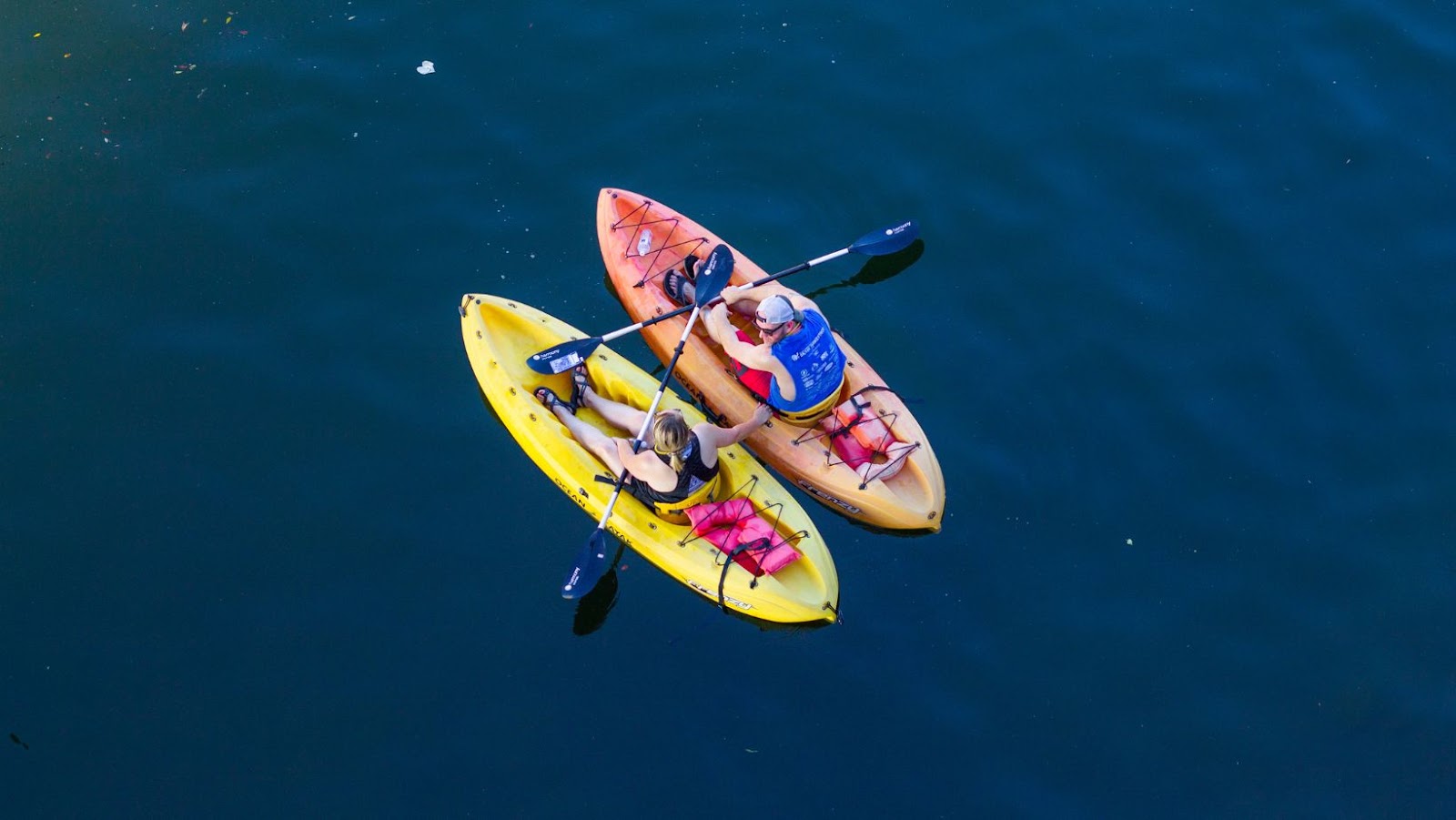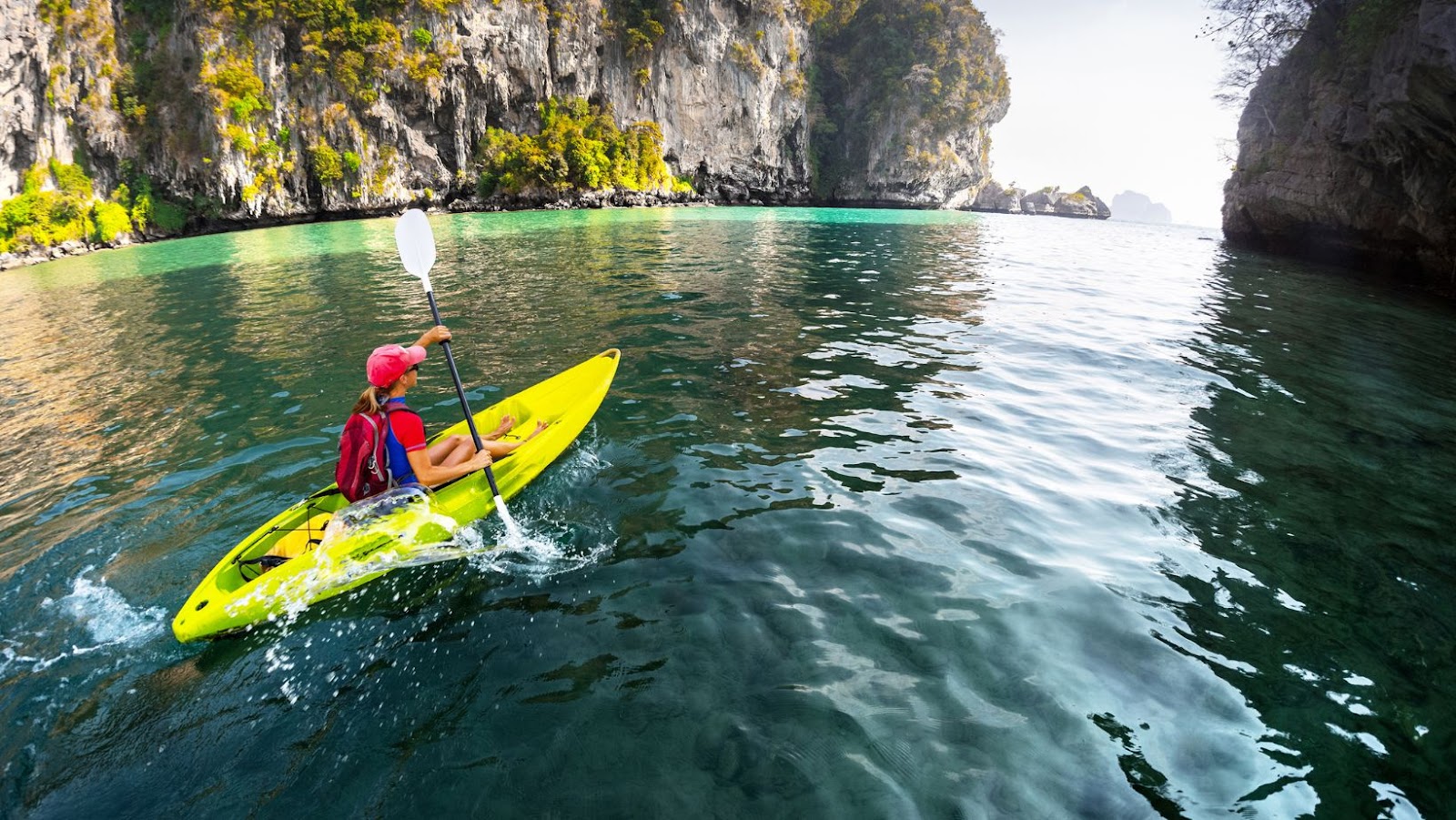
Are you looking for an adventurous and exciting way to explore the waters? Whether you are a beginner or an expert, kayaking and canoeing offer the perfect solution.
Discover why one of these activities may be better suited to your needs in this guide – Canoeing vs. Kayaking: The Facts! Canoeing and kayaking are two very popular activities for adventurers looking to explore the great outdoors. Though the terms are often used interchangeably, there are a few key differences between canoeing and kayaking that make them unique outdoor experiences. This guide will provide an overview of both canoeing and kayaking and highlight the advantages of each activity.
Canoeing is traditionally done with a partner in a larger open vessel, which is usually propelled using a single-bladed paddle. Canoes can accommodate anywhere from one to four people and vary greatly in shape and size, depending on their intended use. They can be used for recreational trips, competitive racing or as an efficient way of transporting gear. Some canoe designs even offer specialized features such as watertight compartments to keep your gear dry or fishing rod holders for anglers looking to cast their lines during the trip.
Kayaking is most often done alone in a closed-deck vessel with a double-bladed paddle, similar in design to what you would see on a surfboard or whitewater raft. Depending on how it’s outfitted, kayaks can also be used for recreational trips or competitive races as well as for activities like fishing or whitewater rafting. Some models even allow you to easily switch between sitting positions for added comfort and maneuverability during your expedition!
History of Canoeing and Kayaking
Canoeing and kayaking both have ancient origins, with canoe designs going back thousands of years. As many cultures developed their own ways to use waterways, they created crafts adapted to their particular needs and characteristics. For example, river-going people in northern climates used canoes made of hollowed out logs; aboriginal Australians and natives of New Zealand used simple reed canoes. In the 17th century, Europeans began to adopt the craft of canoeing on a limited basis while mostly using them for exploration. Once Europeans started settling in North America, they paired up with First Nations and Métis groups to build canoes that would suit their waterway transportation needs and reveal the secrets of the land.
Kayaks have a similar history: Inuit people in remote Arctic regions crafted these vessels based on seal anatomy for hunting purposes and for rugged transportation over icy waters around their homeland. As such, it is believed that kayaks have been around for as long as five thousand years ago! By the early 20th century this style of boat had become popular worldwide; today kayaking is an enjoyable recreational activity, exposed to a range of elements from rapids to still lakes or sheltered inland waterways.
Types of Canoes and Kayaks
The differences between canoeing and kayaking depend on the type of boat you are using, as well as its design and construction. Both canoes and kayaks come in several types, each suited to different kinds of water and activities.
Canoes: Canoes have a flat bottom and ample interior space for paddlers, gear, coolers or pets. The pointed front curves up slightly to keep you dry during your travels on the lake or river. While recreational canoes require minimal skills to operate, whitewater canoes designed for more turbulent water require skill and maneuverability by the paddler.
Kayaks: Kayaks have a very different design from canoes in that they feature a covered deck that the paddler sits inside of. They have a V-shaped hull which provides tracking ability—staying straight against currents—even in swift waters like rapids or open seas. In general, they require more skill than flat-bottomed canoes when operating in any environment.
Inflatable Boats: People also often confuse inflatable boats with hard-shell kayaks or canoes; however, these are technically different vessels altogether! Inflatable boats are best suited for calm waters such as those found on beaches or lakes because they cannot handle waves like hard-shell boats can due to their size and shape of materials used to create them.
Safety Considerations
When considering water recreation, safety should be the top priority. Canoeing and kayaking can both be enjoyed in a variety of settings, from flatwater to whitewater. While both offer unique benefits and experiences, the risks and safety considerations associated with each can vary greatly.
Kayaking generally offers more stability than canoeing since most people kayak in sit-in models rather than cockpits. However, you may find that getting out of a sit-in model is slightly more challenging than a cockpit due to positioning within the boat. Additionally, kayaks have fewer points of contact with the water surface so they are more vulnerable to shifts in winds or changes in current compared to a canoe which has larger and wider surfaces touching the water.
Canoe enthusiasts praise the boat’s versatility when it comes to carrying gear for extended excursions. There is also more room for worry-free movement and paddling controls are easily accessible from sitting or standing positions within the boat—which can be helpful when navigating through challenging waterscape areas or strong currents. Even if capsized, maneuverability and ease of storage on land outweighs that of kayaks; however, due to its having a wider surface area than a kayak, canoes are vulnerable to side winds which can compromise balance when cruising these types of waterscapes.
No matter if your preference is canoeing or kayaking—the importance of skill level proficiency should not be overlooked for either won’t help you remain safe should you venture into challenging waterscapes or turbulent weather conditions dominate your route. Knowing your capabilities beforehand will give you an accurate sense of confidence while helping protect you against unforeseen mishaps while out on your outdoor journey!
Equipment Needed for Canoeing and Kayaking
Both canoeing and kayaking require the right equipment to make sure the experience is both enjoyable and safe. While some of the gear used in these water sports may be similar, there are a few key differences between canoeing and kayaking that you need to know in order to choose the right equipment.
Canoeing Equipment:
- Canoe: A canoe is a larger boat than an average kayak, it can typically accommodate two or more people. It is generally propelled by a single-bladed paddle and steered with another similar paddle held in both hands like an oar.
- Paddles: Canoe paddles have longer and wider blades than those used for kayaking, because of the size difference between a typical canoe and kayak.
- Life Jackets / PFDs: Personal flotation devices (PFD) must always be worn when participating in water sports such as canoeing or kayaking – even if you are an experienced paddler!
Kayaking Equipment:
- Kayak: A kayak is much smaller than a canoe; they come in solo (for one person) and tandem (two persons) sizes. It is powered by either double-bladed or single-bladed paddles, depending on the design of the boat.
- Paddles: Kayaks use shorter, narrower blades than canoes do, making them better suited for this activity that’s performed closer to shorelines and within easier reach for navigation purposes such as evading rapids or other obstacles.
- Life Jackets/PFDs: As with any water sport, it’s essential for safety reasons to wear life jackets whenever out on open waters – even if you’re an experienced paddler!
What is the Difference Between Canoeing and Kayaking
Canoeing and kayaking are two popular watersports activities that offer unique experiences. But which is right for you? Let’s take a closer look at the differences between canoeing and kayaking so that you can make the best decision for your own adventures on the water.
Boats: Canoes are open boats with solid sides, typically propelled by a single bladed paddle held in both hands. Kayaks have closed cockpits with bulkheads, requiring a double-bladed paddle. Either can carry multiple passengers as long as there is enough space.

Stability: Canoes are less stable because they sit higher in the water than kayaks, so it can be harder to stay balanced in a canoe than it is in a kayak! However, once you’re accustomed to the rocking motion of the boat, canoeing can offer its own level of thrill. On the other hand, kayaks offer more stability due to their low profile in the water combined with its wider base and double bladed paddle configuration.
Cost: Canoes tend to be less expensive than kayaks of comparable quality because they are easier to construct — they don’t require complex frame design or hull forming techniques that may be used in more advanced kayak construction methods. Additionally, most recreational grade canoes and kayaks are constructed from similar materials such as polyethylene or fibreglass making either boat type an affordable choice for getting started with paddling sports.
No matter which type of boat appeals to you most, getting out on the water is always an enjoyable experience! With knowledge of how each type differs combined with your own personal preference – it’s easy to make an enlightened decision before embarking on any day out adventures near or far!
Benefits of Canoeing and Kayaking
Canoeing and kayaking are two popular outdoor water sports that offer a variety of benefits. With both sports, it is possible to explore the outdoors and take in the beauty of nature in a peaceful setting. Whether you’re an experienced athlete or just getting started, paddling can add excitement to your day.
Benefits of Canoeing: Canoes provide more space for gear and extra passengers than a kayak does. Wide-beam canoes are often more stable in the water, making them easier for beginners to maneuver. They are also typically less expensive than their kayak counterparts and can be used by one or multiple people.
Benefits of Kayaking: Kayaks provide speed and agility on the water, allowing you to travel faster over longer distances. Keeping you lower to the water makes it easier to stay out of windy conditions . They track straighter than a canoe, so they require less effort from their paddlers — making them ideal for experienced athletes who want to cover ground quickly. In addition, kayaks come in sit-on-top designs which make it easier for some people to get on (and off) without assistance.

In conclusion, both canoeing and kayaking are enjoyable outdoor sports. Choosing which one is right for you depends on a variety of factors, including your budget, the style of watercraft you prefer, and the type of terrain in which you plan to paddle. Both require a great deal of skill and technique to safely navigate waterway conditions with safety as the number one priority.
As a general rule, kayaking requires more agility than canoeing does but requires less energy to move in shallow water or moving current. Canoes have more capacity for weight and supplies so they’re an excellent choice for extended trips or long days on the lake.
Ultimately, choosing between canoeing or kayaking is a personal decision based on your own comfort level and paddling goals.




